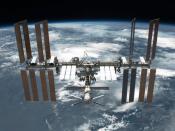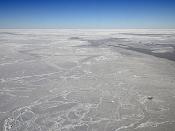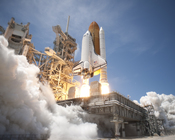"The first night in space when I was drifting off to sleep," recalled one Apollo astronaut, "I suddenly realized that I had lost track of ... my arms and legs. For all my
mind could tell, my limbs were not there. However, with a conscious command for an arm or leg to move, it instantly reappeared -- only to disappear again when I
relaxed."
Another astronaut from the Gemini program reported waking in the dark during a mission and seeing a disembodied glow-in-the-dark watch floating in front of him.
Where had it come from? He realized moments later that the watch was around his own wrist. Another astronaut reported a strange experience when he woke up
one day in orbit. As he opened his eyes the room was rotating around him!
In space the vestibular system doesn't sense the familiar pull of gravity. The world can suddenly seem topsy-turvy. Consider, for example, "up" and "down."
On
Earth we always know which way is up because gravity tell us. Sensors in the inner ear, which are part of the body's vestibular system, can feel the pull of gravity.
They signal the brain with information about our body's orientation. These sorts of mismatches between what the eyes see and what the body feels can trigger a
malady called "space sickness." Scientists think it's much like "car sickness," which you can get right here on Earth by trying to read in a moving car. The inner ear
detects the motion of the car but the eyes -- staring at a page filled with unmoving words -- do not.
Cyclic nausea and vomiting are characteristic. They may be preceded by yawning, hyperventilation, salivation, pallor, profuse cold sweating, and somnolence.
Aerophagia, dizziness, headache, general discomfort, and fatigue may also occur. Once nausea and vomiting develop,



Wow
Great essay. Clearly outlined purpose and theme. Very good use of quotes and sources as evidence for main points. Nice analogies and explanations.
8 out of 8 people found this comment useful.